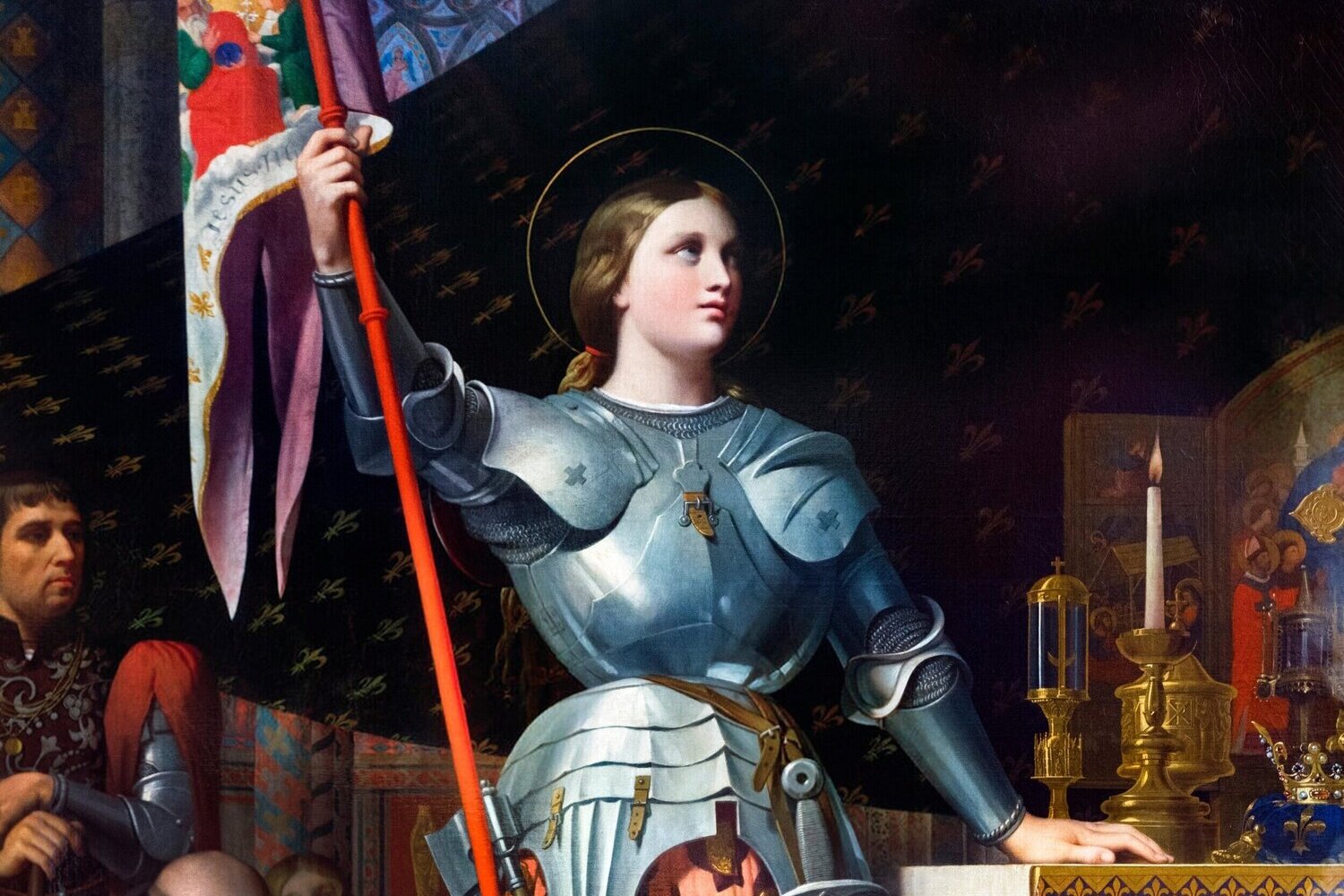Joan of Arc is one of the most mysterious and influential figures in French history. Surrounded by legends, myths, and symbolism, she became not only a heroine of the Hundred Years’ War but also an icon of French national spirit. Despite her young age and lack of military training, she managed to unite an army and change the course of history. There are far more interesting facts about Joan of Arc than many realize, and quite a few you may not have heard before. Below is a collection of fascinating and surprising facts about this exceptional historical figure.
- Joan of Arc was born in 1412 in the village of Domrémy in northeastern France. Her family were peasants, and Joan was known for her deep piety from an early age. She could neither read nor write but knew many prayers by heart and attended church regularly.
- According to her own testimony, she first heard the voices of saints at the age of 13. She believed they were Saint Catherine, Saint Margaret, and the Archangel Michael. These voices commanded her to liberate France from English rule and lead the dauphin Charles to the throne.
- Joan was only 17 when she began her military campaign. She traveled to the dauphin of France to convince him of her divine mission. To the amazement of many, she gained his trust and was allowed to lead his army.
- She not only commanded troops but also took part in battles herself. Joan wore male clothing and armor so as not to stand out among the soldiers. Her presence on the battlefield boosted morale and inspired her comrades.
- Her most famous victory was the liberation of Orléans in 1429. This event marked a turning point in the Hundred Years’ War between France and England. It paved the way for the coronation of Charles VII in Reims and strengthened the French position.
- Joan of Arc never personally killed anyone in battle. Her main weapon was the banner she carried during combat. She saw her role as one of inspiration rather than violence and forbade her soldiers from looting.
- Although she had the support of common people and some nobles, Joan had many enemies among the French elite. Her straightforwardness and strong religious convictions made clergy and politicians suspicious of her. Many feared her growing influence over the king and army.
- In 1430, Joan was captured by the Burgundians, allies of the English, during the siege of Compiègne. The French did not ransom her, and she was sold to the English for 10,000 livres. This marked the beginning of her tragic downfall.
- Her trial was conducted by the Church’s Inquisition and was politically motivated. She was charged with heresy, witchcraft, and wearing male clothing. She defended herself with dignity and intelligence, surprising even her accusers.
- On May 30, 1431, Joan was burned at the stake in Rouen at the age of just 19. According to legend, her ashes were thrown into the Seine River to prevent the keeping of relics. In the public’s mind, however, she had already become a martyr and national heroine.
- Twenty-five years after her execution, a retrial initiated by her mother and French clergy declared her innocent. This rehabilitation cleared her name and revealed her as a victim of political injustice. Her reputation was fully restored.
- Joan of Arc was canonized by the Roman Catholic Church in 1920. This act symbolically recognized her holiness and contributions to France. Today, she is the patron saint of France and a symbol of faith and courage.
- In 1909, before her canonization, she was beatified. This was a significant event for both the Catholic Church and French national identity. The process involved decades of historical research and documentation.
- Monuments to Joan of Arc exist throughout France and around the world. The most famous is the equestrian statue in Paris on Place des Pyramides. Her image appears frequently in art, literature, music, and film.
- Mark Twain wrote a book about her, which he considered his greatest work. His historical novel Personal Recollections of Joan of Arc was written with deep respect for the heroine. Twain thoroughly studied historical records to portray her as faithfully as possible.
- France officially celebrates Joan of Arc Day on the second Sunday of May. It is a national holiday marked by parades and church services. Her figure continues to inspire patriotic sentiment across the country.
- Joan is said to have possessed exceptional charisma. Even her enemies admitted that her speeches could move crowds. She inspired others not through force, but through belief and conviction.
- Her image has been used for political and ideological purposes throughout history. At various times she was seen as a symbol of resistance, freedom, Catholic faith, or national unity. This reflects her complex and powerful legacy.
- The trial transcripts from Joan’s court proceedings have survived to this day and are a rare glimpse into medieval justice. They contain her actual words and interactions with the judges. These records have become the foundation for many scholarly works and creative adaptations.
These astonishing and interesting facts about Joan of Arc reveal just how complex and extraordinary her life truly was. Her story is a testament to the power of faith, inner calling, and unshakable determination. She proved that even a humble village girl could alter the fate of a nation. To this day, her courage and legacy continue to inspire millions around the world.





